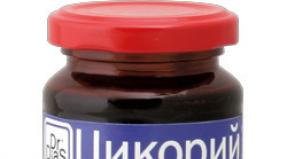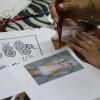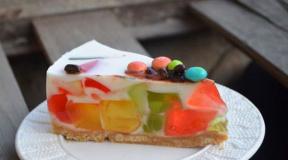What is a decimal. Decimals. The concept of decimal fraction. Basic property of a fraction
We have already said that fractions are ordinary and decimal. At the moment, we have studied ordinary fractions a little. We learned that there are regular fractions and improper fractions. We also learned that ordinary fractions can be reduced, added, subtracted, multiplied and divided. And we also learned that there are so-called mixed numbers, which consist of an integer and a fractional part.
We have not yet fully studied ordinary fractions. There are many subtleties and details that should be discussed, but today we will begin to study decimal fractions, since ordinary and decimal fractions quite often have to be combined. That is, when solving problems, you have to work with both types of fractions.
This lesson may seem complicated and incomprehensible. It's quite normal. These kinds of lessons require that they be studied and not skimmed over.
Lesson contentExpressing quantities in fractional form
Sometimes it is convenient to show something in fractional form. For example, one tenth of a decimeter is written like this:
This expression means that one decimeter was divided into ten equal parts, and one part was taken from these ten parts. And one part out of ten in this case is equal to one centimeter:

Consider the following example. Show 6 cm and another 3 mm in centimeters in fractional form.
So, you want to show 6 cm and 3 mm in centimeters, but in fractional form. We already have 6 whole centimeters:

But there are still 3 millimeters left. How to show these 3 millimeters, while in centimeters? Fractions come to the rescue. One centimeter is ten millimeters. Three millimeters is three parts out of ten. And three parts out of ten are written as cm

The expression cm means that one centimeter was divided into ten equal parts, and three parts were taken from these ten parts.
As a result, we have six whole centimeters and three tenths of a centimeter:
In this case, 6 shows the number of whole centimeters, and the fraction shows the number of fractional. This fraction is read as "six point and three tenths of a centimeter".
Fractions, in the denominator of which there are numbers 10, 100, 1000, can be written without a denominator. First write the integer part, and then the numerator of the fractional part. The integer part is separated from the numerator of the fractional part by a comma.
For example, let's write without a denominator. First write down the whole part. The whole part is 6
The whole part is recorded. Immediately after writing the whole part, put a comma:
And now we write down the numerator of the fractional part. In a mixed number, the numerator of the fractional part is the number 3. We write the three after the decimal point:
Any number that is represented in this form is called decimal.
Therefore, you can show 6 cm and another 3 mm in centimeters using a decimal fraction:
6.3 cm
It will look like this:

In fact, decimals are the same common fractions and mixed numbers. The peculiarity of such fractions is that the denominator of their fractional part contains the numbers 10, 100, 1000 or 10000.
Like a mixed number, a decimal has an integer part and a fractional part. For example, in a mixed number, the integer part is 6 and the fractional part is .
In the decimal fraction 6.3, the integer part is the number 6, and the fractional part is the numerator of the fraction, that is, the number 3.
It also happens that ordinary fractions in the denominator of which the numbers 10, 100, 1000 are given without an integer part. For example, a fraction is given without an integer part. To write such a fraction as a decimal, first write down 0, then put a comma and write down the numerator of the fractional part. A fraction without a denominator would be written like this:
Reads like "zero point five tenths".
Convert mixed numbers to decimals
When we write mixed numbers without a denominator, we are converting them to decimals. When converting ordinary fractions to decimals, there are a few things you need to know, which we will talk about now.
After the integer part is written, it is imperative to count the number of zeros in the denominator of the fractional part, since the number of zeros in the fractional part and the number of digits after the decimal point in the decimal fraction must be the same. What does it mean? Consider the following example:
First
And you could immediately write down the numerator of the fractional part and the decimal fraction is ready, but you must definitely count the number of zeros in the denominator of the fractional part.
So, we count the number of zeros in the fractional part of the mixed number. The denominator of the fractional part has one zero. So in the decimal fraction after the decimal point there will be one digit and this figure will be the numerator of the fractional part of the mixed number, that is, the number 2
Thus, the mixed number, when translated into a decimal fraction, becomes 3.2.
This decimal is read like this:
"Three whole two tenths"
"Tenths" because the fractional part of the mixed number contains the number 10.
Example 2 Convert mixed number to decimal.
We write down the whole part and put a comma:
And you could immediately write down the numerator of the fractional part and get the decimal fraction 5.3, but the rule says that after the decimal point there should be as many digits as there are zeros in the denominator of the fractional part of the mixed number. And we see that there are two zeros in the denominator of the fractional part. So in our decimal fraction after the decimal point there should be two digits, not one.
In such cases, the numerator of the fractional part needs to be slightly modified: add a zero before the numerator, that is, before the number 3
Now you can convert this mixed number to a decimal. We write down the whole part and put a comma:
And write the numerator of the fractional part:
The decimal fraction 5.03 reads like this:
"Five point three hundredths"
"Hundredths" because the denominator of the fractional part of the mixed number is the number 100.
Example 3 Convert mixed number to decimal.
From the previous examples, we learned that in order to successfully convert a mixed number to a decimal, the number of digits in the numerator of the fractional part and the number of zeros in the denominator of the fractional part must be the same.
Before converting a mixed number into a decimal fraction, its fractional part needs to be slightly modified, namely, to make sure that the number of digits in the numerator of the fractional part and the number of zeros in the denominator of the fractional part are the same.
First of all, we look at the number of zeros in the denominator of the fractional part. We see that there are three zeros:

Our task is to organize three digits in the numerator of the fractional part. We already have one digit - this is the number 2. It remains to add two more digits. They will be two zeros. Add them before the number 2. As a result, the number of zeros in the denominator and the number of digits in the numerator will become the same:

Now we can turn this mixed number into a decimal. We write down the whole part first and put a comma:
and immediately write down the numerator of the fractional part
3,002
We see that the number of digits after the decimal point and the number of zeros in the denominator of the fractional part of the mixed number are the same.
The decimal 3.002 reads like this:
"Three whole, two thousandths"
"Thousandths" because the denominator of the fractional part of the mixed number is the number 1000.
Converting common fractions to decimals
Ordinary fractions, in which the denominator is 10, 100, 1000 or 10000, can also be converted to decimal fractions. Since an ordinary fraction does not have an integer part, first write down 0, then put a comma and write down the numerator of the fractional part.
Here, too, the number of zeros in the denominator and the number of digits in the numerator must be the same. Therefore, you should be careful.
Example 1
The integer part is missing, so first we write 0 and put a comma:
Now look at the number of zeros in the denominator. We see that there is one zero. And the numerator has one digit. So you can safely continue the decimal fraction by writing the number 5 after the decimal point
In the resulting decimal fraction 0.5, the number of digits after the decimal point and the number of zeros in the denominator of the fraction are the same. So the fraction is correct.
The decimal fraction 0.5 reads like this:
"Zero point, five tenths"
Example 2 Convert common fraction to decimal.
The whole part is missing. We write 0 first and put a comma:
Now look at the number of zeros in the denominator. We see that there are two zeros. And the numerator has only one digit. To make the number of digits and the number of zeros the same, add one zero in the numerator before the number 2. Then the fraction will take the form . Now the number of zeros in the denominator and the number of digits in the numerator are the same. So you can continue the decimal:
In the resulting decimal fraction 0.02, the number of digits after the decimal point and the number of zeros in the denominator of the fraction are the same. So the fraction is correct.
The decimal fraction 0.02 reads like this:
"Zero point, two hundredths."
Example 3 Convert common fraction to decimal.
We write 0 and put a comma:
Now we count the number of zeros in the denominator of the fraction. We see that there are five zeros, and there is only one digit in the numerator. To make the number of zeros in the denominator and the number of digits in the numerator the same, you need to add four zeros in the numerator before the number 5:
Now the number of zeros in the denominator and the number of digits in the numerator are the same. So you can continue the decimal. We write down the numerator of the fraction after the decimal point
In the resulting decimal fraction 0.00005, the number of digits after the decimal point and the number of zeros in the denominator of the fraction are the same. So the fraction is correct.
The decimal fraction 0.00005 reads like this:
"Zero point, five hundred-thousandths."
Convert improper fractions to decimals
An improper fraction is a fraction whose numerator is greater than the denominator. There are improper fractions that have the numbers 10, 100, 1000 or 10000 in the denominator. Such fractions can be converted to decimal fractions. But before converting to a decimal fraction, such fractions must have an integer part.
Example 1
The fraction is an improper fraction. To convert such a fraction to a decimal fraction, you must first select its integer part. We recall how to select the whole part of improper fractions. If you forgot, we advise you to return to and study it.
So, let's select the integer part in the improper fraction. Recall that a fraction means division - in this case, dividing the number 112 by the number 10

Let's look at this picture and assemble a new mixed number, like a children's construction set. The number 11 will be the integer part, the number 2 will be the numerator of the fractional part, the number 10 will be the denominator of the fractional part.

We got a mixed number. Let's convert it to a decimal. And we already know how to translate such numbers into decimal fractions. First we write down the whole part and put a comma:
Now we count the number of zeros in the denominator of the fractional part. We see that there is one zero. And the numerator of the fractional part has one digit. This means that the number of zeros in the denominator of the fractional part and the number of digits in the numerator of the fractional part are the same. This gives us the opportunity to immediately write the numerator of the fractional part after the decimal point:
In the resulting decimal fraction 11.2, the number of digits after the decimal point and the number of zeros in the denominator of the fraction are the same. So the fraction is correct.
This means that an improper fraction, when converted to a decimal fraction, turns into 11.2
Decimal 11.2 reads like this:
"Eleven whole, two tenths."
Example 2 Convert improper fraction to decimal.
This is an improper fraction because the numerator is greater than the denominator. But it can be converted to a decimal fraction, since the denominator is the number 100.
First of all, we select the integer part of this fraction. To do this, divide 450 by 100 by a corner:

Let's collect a new mixed number - we get . And we already know how to translate mixed numbers into decimal fractions.
We write down the whole part and put a comma:
Now we count the number of zeros in the denominator of the fractional part and the number of digits in the numerator of the fractional part. We see that the number of zeros in the denominator and the number of digits in the numerator are the same. This gives us the opportunity to immediately write the numerator of the fractional part after the decimal point:
In the resulting decimal fraction 4.50, the number of digits after the decimal point and the number of zeros in the denominator of the fraction are the same. So the fraction is translated correctly.
So the improper fraction, when translated into a decimal fraction, turns into 4.50
When solving problems, if there are zeros at the end of the decimal fraction, they can be discarded. Let's drop the zero in our answer. Then we get 4.5
This is one of interesting features decimal fractions. It lies in the fact that the zeros that are at the end of the fraction do not give this fraction any weight. In other words, the decimals 4.50 and 4.5 are equal. Let's put an equal sign between them:
4,50 = 4,5
The question arises: why is this happening? After all, 4.50 and 4.5 look like different fractions. The whole secret lies in the basic property of the fraction, which we studied earlier. We will try to prove why the decimal fractions 4.50 and 4.5 are equal, but after studying the next topic, which is called "converting a decimal fraction to a mixed number."
Decimal to mixed number conversion
Any decimal fraction can be converted back to a mixed number. To do this, it is enough to be able to read decimal fractions. For example, let's convert 6.3 to a mixed number. 6.3 is six whole points and three tenths. We write down six integers first:
and next three tenths:
Example 2 Convert decimal 3.002 to mixed number
3.002 is three integers and two thousandths. Write down three integers first.
and next we write two thousandths:
Example 3 Convert decimal 4.50 to mixed number
4.50 is four point and fifty hundredths. Write down four integers
and next fifty hundredths:
By the way, let's remember the last example from the previous topic. We said that the decimals 4.50 and 4.5 are equal. We also said that zero can be discarded. Let's try to prove that decimal 4.50 and 4.5 are equal. To do this, we convert both decimal fractions to mixed numbers.
After converting to a mixed number, the decimal 4.50 becomes , and the decimal 4.5 becomes
We have two mixed numbers and . Convert these mixed numbers to improper fractions:
![]()
![]()
Now we have two fractions and . It is time to remember the basic property of a fraction, which says that when multiplying (or dividing) the numerator and denominator of a fraction by the same number, the value of the fraction does not change.
Let's divide the first fraction by 10
![]()
Received, and this is the second fraction. So and are equal to each other and equal to the same value:
Try dividing 450 by 100 first on a calculator, and then 45 by 10. A funny thing will work out.
Convert decimal to common fraction
Any decimal fraction can be converted back to a common fraction. To do this, again, it is enough to be able to read decimal fractions. For example, let's convert 0.3 to an ordinary fraction. 0.3 is zero and three tenths. We write zero integers first:
and next to three tenths 0 . Zero is traditionally not written down, so the final answer will not be 0, but simply.
Example 2 Convert decimal 0.02 to common fraction.
0.02 is zero and two hundredths. We don’t write down zero, so we immediately write down two hundredths
Example 3 Convert 0.00005 to fraction
0.00005 is zero and five hundred thousandths. Zero is not written down, so we immediately write down five hundred thousandths
Did you like the lesson?
Join our new Vkontakte group and start receiving notifications of new lessons
Subject: Decimals. Adding and subtracting decimals
Lesson: Decimal notation of fractional numbers
The denominator of a fraction can be expressed as any natural number. Fractional numbers in which the denominator is expressed by the number 10; one hundred; 1000;…, where n , agreed to write without a denominator. Any fractional number whose denominator is 10; one hundred; 1000 etc. (that is, a one with several zeros) can be represented as a decimal notation (as a decimal fraction). First, write the integer part, then the numerator of the fractional part, and separate the integer part from the fractional part with a comma.
For instance,
![]()
If the whole part is missing, i.e. the fraction is correct, then the integer part is written as 0.
To write a decimal correctly, the numerator of the fractional part must have as many digits as there are zeros in the fractional part.
![]()
1. Write as a decimal.
![]()
2. Represent the decimal as a fraction or mixed number.
3. Read the decimals.
12.4 - 12 whole 4 tenths;
0.3 - 0 whole 3 tenths;
1.14 - 1 whole 14 hundredths;
2.07 - 2 whole 7 hundredths;
0.06 - 0 point 6;
0.25 - 0 whole 25 hundredths;
1.234 - 1 whole 234 thousandths;
1.230 - 1 whole 230 thousandths;
1.034 - 1 whole 34 thousandths;
1.004 - 1 whole 4 thousandths;
1.030 - 1 whole 30 thousandths;
0.010101 - 0 point 10101 ppm.
4. Move the comma in each digit 1 digit to the left and read the numbers.
34,1; 310,2; 11,01; 10,507; 2,7; 3,41; 31,02; 1,101; 1,0507; 0,27.
5. Move the comma in each of the numbers 1 digit to the right and read the resulting number.
1,37; 0,1401; 3,017; 1,7; 350,4; 13,7; 1,401; 30,17; 17; 3504.
6. Express in meters and centimeters.
3.28 m = 3 m + .
7. Express in tons and kilograms.
24.030 t = 24 t.
8. Write down the quotient as a decimal fraction.
1710: 100 = ![]() ;
;
64: 10000 = ![]()
803: 100 = ![]()
407: 10 = ![]()
9. Express in dm.
5 dm 6 cm = 5 dm + ![]() ;
;
9 mm = ![]()
fractional number.
Decimal notation of a fractional number is a set of two or more digits from $0$ to $9$, between which is the so-called \textit( decimal point}.
Example 1
For example, $35.02; $100.7; $123 \ $456.5; $54.89.
The leftmost digit in the decimal representation of a number cannot be zero, except when the decimal point is immediately after the first digit $0$.
Example 2
For example, $0.357; $0.064.
Often the decimal point is replaced by a decimal point. For example, $35.02$; $100.7$; $123 \ 456.5$; $54.89.
Decimal definition
Definition 1
Decimals are fractional numbers that are represented in decimal notation.
For example, $121.05; $67.9; $345.6700.
Decimals are used for a more compact representation of regular fractions whose denominators are the numbers $10$, $100$, $1\000$, etc. and mixed numbers whose denominators are $10$, $100$, $1\000$, etc.
For example, the common fraction $\frac(8)(10)$ can be written as the decimal $0.8$, and the mixed number $405\frac(8)(100)$ as the decimal $405.08$.
Reading decimals
Decimals that correspond to regular fractions are read the same as ordinary fractions, only the phrase "zero integers" is added in front. For example, the common fraction $\frac(25)(100)$ (read "twenty-five hundredths") corresponds to the decimal fraction $0.25$ (read "zero point twenty-five hundredths").
Decimals that correspond to mixed numbers are read the same way as mixed numbers. For example, the mixed number $43\frac(15)(1000)$ corresponds to the decimal fraction $43.015$ (read "forty-three point fifteen thousandths").
Places in decimals
In decimal notation, the value of each digit depends on its position. Those. in decimal fractions, the concept also takes place discharge.
The digits in decimal fractions up to the decimal point are called the same as the digits in natural numbers. The digits in decimal fractions after the decimal point are listed in the table:
Picture 1.
Example 3
For example, in the decimal fraction $56,328$, $5$ is in the tens place, $6$ is in the units place, $3$ is in the tenth place, $2$ is in the hundredth place, $8$ is in the thousandth place.
The digits in decimal fractions are distinguished by seniority. When reading a decimal fraction, they move from left to right - from senior discharge to junior.
Example 4
For example, in decimal $56.328$, the most significant (highest) digit is the tens digit, and the least significant (lowest) digit is the thousandths digit.
A decimal fraction can be expanded into digits in the same way as expansion into digits of a natural number.
Example 5
For example, let's expand the decimal fraction $37,851$ into digits:
$37,851=30+7+0,8+0,05+0,001$
End decimals
Definition 2
End decimals are called decimal fractions, the records of which contain a finite number of characters (digits).
For example, $0.138; $5.34; $56.123456; $350,972.54.
Any final decimal fraction can be converted to a common fraction or a mixed number.
Example 6
For example, the final decimal fraction $7.39$ corresponds to the fractional number $7\frac(39)(100)$, and the final decimal fraction $0.5$ corresponds to the proper fraction $\frac(5)(10)$ (or any fraction, which is equal to it, for example, $\frac(1)(2)$ or $\frac(10)(20)$.
Converting an ordinary fraction to a decimal fraction
Convert common fractions with denominators $10, 100, \dots$ to decimals
Before converting some proper ordinary fractions to decimals, they must first be “prepared”. The result of such preparation should be the same number of digits in the numerator and the number of zeros in the denominator.
The essence of the “preliminary preparation” of correct ordinary fractions for conversion to decimal fractions is to add on the left in the numerator such a number of zeros that the total number of digits becomes equal to the number of zeros in the denominator.
Example 7
For example, let's prepare the common fraction $\frac(43)(1000)$ for conversion to decimal and get $\frac(043)(1000)$. And the ordinary fraction $\frac(83)(100)$ does not need to be prepared.
Let's formulate rule for converting a proper common fraction with denominator $10$, or $100$, or $1\000$, $\dots$ to a decimal fraction:
write $0$;
put a decimal point after it;
write down the number from the numerator (together with added zeros after preparation, if necessary).
Example 8
Convert proper fraction $\frac(23)(100)$ to decimal.
Solution.
The denominator is the number $100$, which contains $2$ two zeros. The numerator contains the number $23$, which contains $2$.digits. this means that preparation for this fraction for conversion to decimal is not necessary.
Let's write $0$, put a decimal point and write the number $23$ from the numerator. We get the decimal fraction $0.23$.
Answer: $0,23$.
Example 9
Write the proper fraction $\frac(351)(100000)$ as a decimal.
Solution.
The numerator of this fraction has $3$ digits, and the number of zeros in the denominator is $5$, so this ordinary fraction needs to be prepared for conversion to decimal. To do this, add $5-3=2$ zeros to the left in the numerator: $\frac(00351)(100000)$.
Now we can form the desired decimal fraction. To do this, write $0$, then put a comma and write the number from the numerator. We get the decimal fraction $0.00351$.
Answer: $0,00351$.
Let's formulate rule for converting improper common fractions with denominators $10$, $100$, $\dots$ to decimals:
write a number from the numerator;
separate with a decimal point as many digits on the right as there are zeros in the denominator of the original fraction.
Example 10
Convert improper common fraction $\frac(12756)(100)$ to decimal.
Solution.
Let's write the number from the numerator $12756$, then separate the digits on the right with a decimal point $2$, because the denominator of the original fraction $2$ is zero. We get the decimal fraction $127.56$.
The decimal fraction is used when you need to perform operations on non-integer numbers. This may seem irrational. But this type of numbers greatly facilitates the mathematical operations that must be performed with them. This understanding comes with time, when their writing becomes familiar, and reading does not cause difficulties, and the rules of decimal fractions are mastered. Moreover, all actions are repeated already known, which are learned with natural numbers. You just need to remember some features.
Decimal definition
A decimal is a special representation of a non-integer number with a denominator that is divisible by 10 and the answer is one and possibly zeros. In other words, if the denominator is 10, 100, 1000, and so on, it is more convenient to rewrite the number using a comma. Then the integer part will be located before it, and then the fractional part. Moreover, the record of the second half of the number will depend on the denominator. The number of digits that are in the fractional part must be equal to the denominator.
The above can be illustrated with these numbers:
9/10=0,9; 178/10000=0,0178; 3,05; 56 003,7006.
Reasons for using decimals

Mathematicians needed decimals for several reasons:
Simplify recording. Such a fraction is located along one line without a dash between the denominator and numerator, while the visibility does not suffer.
Simplicity in comparison. It is enough just to correlate the numbers that are in the same positions, while with ordinary fractions one would have to bring them to a common denominator.
Simplification of calculations.
Calculators are not designed to introduce ordinary fractions; they use decimal notation for all operations.

How to read such numbers correctly?
The answer is simple: just like an ordinary mixed number with a denominator that is a multiple of 10. The only exceptions are fractions without an integer value, then when reading you need to say “zero integers”.
For example, 45/1000 should be pronounced as forty five thousandths, while 0.045 will sound like zero point forty-five thousandths.
A mixed number with an integer part equal to 7 and a fraction of 17/100, which will be written as 7.17, in both cases will be read as seven point seventeen hundredths.
The role of digits in the notation of fractions
It is true to note the discharge - this is what mathematics requires. Decimals and their meaning can change significantly if you write a digit in the wrong place. However, this has been true before.
To read the digits of the integer part of a decimal fraction, you just need to use the rules known for natural numbers. And on the right side they are mirrored and read differently. If "tens" sounded in the whole part, then after the decimal point it will be already "tenths".
This can be clearly seen in this table.
| Class | thousands | units | , | fraction | |||||||
| discharge | hundred | dec. | units | hundred | dec. | units | tenth | hundredth | thousandth | ten thousandth | |
How to write a mixed number as a decimal?
If the denominator contains a number equal to 10 or 100, and others, then the question of how to convert a fraction to a decimal is simple. To do this, it is enough to rewrite all its constituent parts in a different way. The following points will help with this:
write the numerator of the fraction a little aside, at this moment the decimal point is located on the right, after the last digit;
move the comma to the left, the most important thing here is to correctly count the numbers - you need to move it as many positions as there are zeros in the denominator;
if there are not enough of them, then zeros should appear in empty positions;
zeros that were at the end of the numerator are no longer needed, and they can be crossed out;
add an integer part before the comma, if it was not there, then zero will also appear here.
Attention. You can not cross out zeros that are surrounded by other numbers.
You can read about how to be in a situation where the denominator contains a number not only of one and zeros, how to convert a fraction to a decimal, you can read a little lower. This important information which is definitely worth checking out.

How to convert a fraction to a decimal if the denominator is an arbitrary number?
There are two options here:
When the denominator can be represented as a number that is ten to any power.
If such an operation cannot be done.
How to check it? You need to factorize the denominator. If only 2 and 5 are present in the product, then everything is fine, and the fraction is easily converted to a final decimal. Otherwise, if 3, 7 and other prime numbers appear, then the result will be infinite. It is customary to round such a decimal fraction for ease of use in mathematical operations. This will be discussed a little lower.
Studying how such decimal fractions are obtained, Grade 5. Examples will be very helpful here.
Let the denominators contain numbers: 40, 24 and 75. The decomposition into prime factors for them will be as follows:
- 40=2 2 2 5;
- 24=2 2 2 3;
- 75=5 5 3.
In these examples, only the first fraction can be represented as a final fraction.
Algorithm for converting an ordinary fraction to a final decimal
Check the factorization of the denominator into prime factors and make sure that it will consist of 2 and 5.
Add to these numbers so many 2 and 5 that they become an equal number. They will give the value of the additional multiplier.
Multiply the denominator and numerator by this number. The result is an ordinary fraction, under the line of which there is 10 to some extent.

If in the task these actions are performed with a mixed number, then it must first be represented as an improper fraction. And only then act according to the described scenario.
Representation of a common fraction as a rounded decimal
This way of how to convert a fraction to a decimal will seem even easier to someone. Because it doesn't have a lot of action. You just need to divide the numerator by the denominator.
Any number with a decimal part to the right of the decimal point can be assigned an infinite number of zeros. This property should be used.
First, write down the whole part and put a comma after it. If the fraction is correct, write zero.
Then it is necessary to perform the division of the numerator by the denominator. So that they have the same number of digits. That is, assign the required number of zeros to the right of the numerator.
Perform division in a column until the required number of digits is dialed. For example, if you need to round up to hundredths, then there should be 3 of them in the answer. In general, there should be one more digits than you need to get in the end.
Record the intermediate answer after the decimal point and round according to the rules. If the last digit is from 0 to 4, then you just need to discard it. And when it is equal to 5-9, then the one in front of it must be increased by one, discarding the last one.
Return from decimal to ordinary
In mathematics, there are problems when it is more convenient to represent decimal fractions in the form of ordinary ones, in which there is a numerator with a denominator. You can breathe a sigh of relief: this operation is always possible.
For this procedure, you need to do the following:
write down the integer part, if it is equal to zero, then nothing needs to be written;
draw a fractional line;
above it, write the numbers from the right side, if the first are zeros, then they must be crossed out;
under the line, write a unit with as many zeros as there are digits after the decimal point in the original fraction.
That's all you need to do to convert a decimal to a common fraction.
What can you do with decimals?
In mathematics, this will be certain actions with decimal fractions that were previously performed for other numbers.
They are:
comparison;
addition and subtraction;
multiplication and division.
The first action, comparison, is similar to how it was done for natural numbers. To determine which is greater, you need to compare the digits of the integer part. If they turn out to be equal, then they switch to the fractional one and compare them in the same way by digits. The number with the largest digit in the highest order will be the answer.
Adding and subtracting decimals
These are perhaps the simplest steps. Because they are performed according to the rules for natural numbers.

So, in order to add decimal fractions, they need to be written one under the other, placing commas in a column. With such a record, integer parts appear to the left of the commas, and fractional parts to the right. And now you need to add the numbers bit by bit, as is done with natural numbers, moving the comma down. You need to start adding from the smallest digit of the fractional part of the number. If there are not enough numbers in the right half, then add zeros.
Subtraction works in the same way. And here the rule applies, which describes the possibility of taking a unit from the highest digit. If the reduced fraction has fewer digits after the decimal point than the subtrahend, then zeros are simply assigned to it.
The situation is a little more complicated with tasks where you need to perform multiplication and division of decimal fractions.
How to multiply decimal in different examples?
The rule for multiplying decimal fractions by a natural number is as follows:
write them down in a column, ignoring the comma;
multiply as if they were natural;
separate with a comma as many digits as there were in the fractional part of the original number.
A special case is an example in which a natural number is equal to 10 to any power. Then, to get an answer, you just need to move the comma to the right by as many positions as there are zeros in another factor. In other words, when multiplying by 10, the comma shifts by one digit, by 100 - there will be two of them, and so on. If there are not enough digits in the fractional part, then you need to write zeros in empty positions.
The rule that is used when in the task you need to multiply decimal fractions by another of the same number:
write them down one under the other, ignoring the commas;
multiply as if they were natural numbers;
separate with a comma as many digits as there were in the fractional parts of both original fractions together.
As a special case, examples are distinguished in which one of the factors is equal to 0.1 or 0.01 and so on. In them, you need to move the comma to the left by the number of digits in the presented factors. That is, if multiplied by 0.1, then the comma is shifted by one position.
How to divide a decimal fraction in different tasks?
The division of decimal fractions by a natural number is performed according to the following rule:
write them down for division in a column, as if they were natural;
divide according to the usual rule until the whole part ends;
put a comma in the answer;
continue dividing the fractional component until the remainder is zero;
if necessary, you can assign the required number of zeros.
If the integer part is equal to zero, then it will not be in the answer either.
Separately, there is a division into numbers equal to ten, one hundred, and so on. In such problems, you need to move the comma to the left by the number of zeros in the divisor. It happens that there are not enough digits in the integer part, then zeros are used instead. It can be seen that this operation is similar to multiplying by 0.1 and similar numbers.
To perform division of decimals, you need to use this rule:
turn the divisor into a natural number, and to do this, move the comma in it to the right to the end;
move the comma and in the divisible by the same number of digits;
follow the previous scenario.
The division by 0.1 is highlighted; 0.01 and other similar numbers. In such examples, the comma is shifted to the right by the number of digits in the fractional part. If they are over, then you need to assign the missing number of zeros. It is worth noting that this action repeats the division by 10 and similar numbers.

Conclusion: it's all about practice
Nothing in learning is easy or effortless. It takes time and practice to master new material reliably. Mathematics is no exception.
So that the topic of decimal fractions does not cause difficulties, you need to solve as many examples as possible with them. After all, there was a time when the addition of natural numbers was confusing. And now everything is fine.
Therefore, to paraphrase a well-known phrase: decide, decide and decide again. Then tasks with such numbers will be performed easily and naturally, like another puzzle.
By the way, puzzles are difficult to solve at first, and then you need to do the usual movements. The same is true in mathematical examples: after going along the same path several times, then you will no longer think about where to turn.
In the previous part, we considered fractions with all possible denominators and called them ordinary fractions. We were interested in every fraction that arose in the process of measuring or dividing, regardless of what kind of denominator we got.
Now, from the whole set of fractions, we will select fractions with denominators: 10, 100, 1,000, 10,000, etc., i.e. such fractions, the denominators of which are only numbers represented by unity (1) followed by zeros (one or several). Such fractions are called decimal.
Here are examples of decimals:
We have met with decimal fractions before, but did not indicate any special properties inherent in them. Now we will show that they have some remarkable properties, which simplifies all calculations with fractions.
§ 103. Image of a decimal fraction without a denominator.
Decimal fractions are usually written not in the same way as ordinary fractions, but according to the rules by which whole numbers are written.
To understand how to write a decimal fraction without a denominator, you need to remember how any whole number is written in the decimal system. If, for example, we write a three-digit number using only the number 2, that is, the number 222, then each of these twos will have a special meaning depending on the place it occupies in the number. The first two from the right stands for units, the second for tens, and the third for hundreds. Thus, any digit to the left of any other digit denotes units ten times larger than those indicated by the previous digit. If any digit is missing, then zero is written in its place.
So, in a whole number, units are in the first place on the right, tens are in the second place, etc.
Now let's raise the question of what category of units will be obtained if, for example, we are in the number 222 with right side we will add one more number. To answer this question, you need to take into account that the last two (the first from the right) denotes units.
Therefore, if after the deuce, denoting units, we, a little retreat, write some other number, for example 3, then it will denote units, ten times smaller than the previous ones, in other words, it will denote tenths units; the result is a number containing 222 whole units and 3 tenths of a unit.
It is customary to put a comma between the integer and fractional parts of the number, i.e., write like this:
If after the triple in this number we add another number, for example 4, then it will mean 4 hundredths fractions of a unit; number will look like:
and is pronounced: two hundred and twenty-two point, thirty-four hundredths.
A new digit, for example 5, being assigned to this number, gives us thousandths: 222.345 (two hundred and twenty-two point, three hundred and forty-five thousandths).
For greater clarity, the arrangement in the number of integer and fractional digits can be presented in the form of a table:

Thus, we have explained how decimal fractions are written without a denominator. Let's write some of these fractions.
To write a fraction without a denominator 5/10, you need to take into account that it does not have integers and, therefore, the place of integers must be occupied by zero, i.e. 5/10 = 0.5.
The fraction 2 9/100 without a denominator will be written like this: 2.09, that is, zero must be put in place of the tenths. If we skipped this 0, we would get a completely different fraction, namely 2.9, that is, two whole points and nine tenths.
So, when writing decimal fractions, you need to denote the missing integer and fractional digits by zero:
0.325 - no integers,
0.012 - no integers and no tenths,
1.208 - no hundredths,
0.20406 - no integers, no hundredths, and no ten-thousandths.
The numbers to the right of the decimal point are called decimal places.
In order to avoid mistakes when writing decimal fractions, you need to remember that after the decimal point in the image of a decimal fraction there should be as many digits as there will be zeros in the denominator if we wrote this fraction with a denominator, i.e.
0.1 \u003d 1 / 10 (the denominator has one zero and one digit after the decimal point);
§ 104. Assigning zeros to a decimal fraction.
In the previous paragraph, it was described how decimal fractions without denominators are displayed. Great importance when writing decimal fractions, it has a zero. Every regular decimal fraction has a zero in place of integers to indicate that such a fraction does not have integers. We will now write several different decimals using the numbers: 0, 3 and 5.
0.35 - 0 integers, 35 hundredths,
0.035 - 0 integers, 35 thousandths,
0.305 - 0 integers, 305 thousandths,
0.0035 - 0 integers, 35 ten-thousandths.
Let us now find out what is the meaning of the nulls placed at the end of the decimal fraction, i.e. on the right.
If we take an integer, for example 5, put a comma after it, and then write zero after the comma, then this zero will mean zero tenths. Therefore, this zero assigned to the right will not affect the value of the number, i.e.
Now let's take the number 6.1 and add zero to it on the right, we get 6.10, i.e. we had 1/10 after the decimal point, and it became 10/100, but 10/100 are equal to 1/10. This means that the value of the number has not changed, and from the assignment to the right of zero, only the type of number and pronunciation have changed (6.1 - six point one tenth; 6.10 - six point ten hundredths).
By similar reasoning, we can make sure that assigning zeros to the right to a decimal fraction does not change its value. Therefore, we can write the following equalities:
1 = 1,0,
2,3 = 2,300,
6.7 = 6.70000 etc.
If we assign zeros to the left of the decimal fraction, then they will not have any meaning. Indeed, if we write zero to the left of the number 4.6, then the number will take the form 04.6. Where is zero? It stands in the place of tens, that is, it shows that there are no tens in this number, but this is clear even without zero.
However, it should be remembered that sometimes zeros are assigned to decimal fractions on the right. For example, there are four fractions: 0.32; 2.5; 13.1023; 5,238. We assign zeros on the right to those fractions that have fewer decimal places after the decimal point: 0.3200; 2.5000; 13.1023; 5.2380.
What is it for? Assigning zeros to the right, we got four digits after the decimal point for each number, which means that each fraction will have a denominator of 10,000, and before assigning zeros, the denominator of the first fraction was 100, the second 10, the third 10,000 and the fourth 1,000. So Thus, by assigning zeros, we equalized the number of decimal places of our fractions, i.e., brought them to a common denominator. Therefore, reduction of decimal fractions to a common denominator is carried out by assigning zeros to these fractions.
On the other hand, if some decimal fraction has zeros on the right, then we can discard them without changing its value, for example: 2.60 = 2.6; 3.150 = 3.15; 4.200 = 4.2.
How should one understand such a discarding of zeros to the right of the decimal fraction? It is equivalent to its reduction, and this can be seen if we write these decimal fractions with a denominator:
§ 105. Comparison of decimal fractions in magnitude.
When using decimal fractions, it is very important to be able to compare fractions with each other and answer the question of which of them are equal, which are greater and which are less. Comparing decimals is done differently than comparing integers. For example, a two-digit integer is always greater than a one-digit number, no matter how many ones there are in the single-digit number; a three-digit number is more than a two-digit number, and even more so a one-digit number. But when comparing decimal fractions, it would be a mistake to count all the signs with which fractions are written.
Let's take two fractions: 3.5 and 2.5, and compare them in size. They have the same decimal places, but the first fraction has 3 integers, and the second has 2. The first fraction is greater than the second, i.e.
Let's take other fractions: 0.4 and 0.38. To compare these fractions, it is useful to assign zero to the right of the first fraction. Then we will compare the fractions 0.40 and 0.38. Each of them has two digits after the decimal point, which means that these fractions have the same denominator 100.
We only need to compare their numerators, but the numerator 40 is greater than 38. So the first fraction is greater than the second, i.e.
The first fraction has more tenths than the second, however, the second fraction has 8 more hundredths, but they are less than one tenth, because 1/10 \u003d 10/100.
Now let's compare such fractions: 1.347 and 1.35. We assign zero to the right of the second fraction and compare the decimal fractions: 1.347 and 1.350. The integer parts are the same, so you only need to compare the fractional parts: 0.347 and 0.350. The denominator of these fractions is common, but the numerator of the second fraction is greater than the numerator of the first, which means that the second fraction is greater than the first, i.e. 1.35\u003e 1.347.
Finally, let's compare two more fractions: 0.625 and 0.62473. We add two zeros to the first fraction so that the digits are equal, and compare the resulting fractions: 0.62500 and 0.62473. Their denominators are the same, but the numerator of the first fraction 62500 is greater than the numerator of the second fraction 62473. Therefore, the first fraction is greater than the second, i.e. 0.625 > 0.62473.
Based on the foregoing, we can draw the following conclusion: of two decimal fractions, the one with more integers is larger; when the integers are equal, that fraction is greater, in which the number of tenths is greater; when integers and tenths are equal, that fraction is greater, in which the number of hundredths is greater, etc.
§ 106. Increase and decrease of a decimal fraction by 10, 100, 1,000, etc. times.
We already know that adding zeros to a decimal does not affect its value. When we studied integers, we saw that every zero assigned to the right increased the number by 10 times. It is not difficult to understand why this happened. If we take an integer, for example 25, and add zero to the right of it, then the number will increase by 10 times, the number 250 is 10 times greater than 25. When zero appeared on the right, the number 5, which used to denote units, now began to denote tens, and the number 2, which used to stand for tens, now stands for hundreds. So, thanks to the appearance of zero, the old digits were replaced by new ones, they became larger, they moved one place to the left. When it is necessary to increase a decimal fraction, for example, by 10 times, then we also have to move the digits one place to the left, but such a movement cannot be achieved with zero. A decimal fraction consists of an integer part and a fractional part, separated by a comma. To the left of the decimal point is the lowest integer digit, to the right is the highest fractional digit. Consider a fraction:
How can we move the digits in it, at least by one place, i.e., in other words, how can we increase it 10 times? If we move the comma one place to the right, then first of all this will affect the fate of the five: it falls from the area of fractional numbers into the area of integers. The number will then take the form: 12345.678. The change happened with all other numbers, and not just with the five. All the numbers included in the number began to play a new role, the following happened (see table):

All ranks changed their name, and all rank units, so to speak, rose one place. From this, the whole number increased by 10 times. Thus, moving the comma one character to the right increases the number by 10 times.
Let's look at some more examples:
1) Take the fraction 0.5 and move the comma one place to the right; we get the number 5, which is 10 times more than 0.5, because before the five meant tenths of a unit, and now it means whole units.
2) Move the comma in the number 1.234 two digits to the right; the number becomes 123.4. This number is 100 times larger than the previous one, because in it the number 3 began to denote units, the number 2 - tens, and the number 1 - hundreds.
Thus, to increase the decimal fraction by 10, you need to move the comma in it one place to the right; to increase it by 100 times, you need to move the comma two places to the right; to increase 1,000 times - three digits to the right, etc.
If at the same time there are not enough signs for the number, then zeros are assigned to it on the right. For example, let's increase the fraction 1.5 by 100 times by moving the comma by two digits; we get 150. Let's increase the fraction 0.6 by 1,000 times; we get 600.
back if required decrease decimal fraction of 10, 100, 1,000, etc. times, then you need to move the comma to the left in it by one, two, three, etc. characters. Let the fraction 20.5 be given; let's reduce it by 10 times; to do this, we move the comma one sign to the left, the fraction will take the form 2.05. Let's reduce the fraction 0.015 by 100 times; we get 0.00015. Let's reduce the number 334 by 10 times; we get 33.4.



















